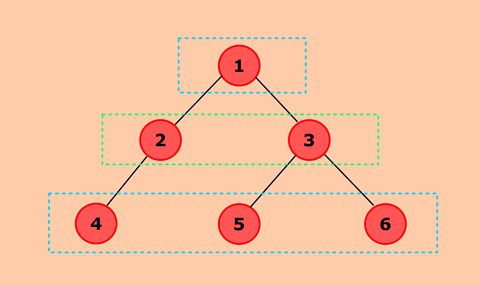
In a full binary tree, only one vertex, namely, the root is of even degree (namely 2) and each of the other (n-1) vertices is of odd degree (namely 1 or 3.) Since the number of vertices of odd degree in an undirected graph is given even, (n-1) is even. ∴ n is odd. Now let p be the number of pendant vertices of the full binary tree. Given a Binary Tree. Find the difference between the sum of node values at even levels and the sum of node values at the odd levels. 2 / \ 3 5 For the above tree the odd level sum is 2 and even level sum is 8 thus the difference is =-6 Input: First line of input contains the number of test cases T. Nov 06, · In a binary search, with an even amount of numbers, will the algorithm choose the higher or lower middle number? For an odd number of values N/2 would lie between two values. As a choice has to be made of what value to compare it is possible to either take the integer part of N/2 and ignore the decimal part (by using integer division), or.
c++ - Binary Search Tree finding total odd nodes | DaniWeb
Given a binary tree, print its nodes level by level in spiral order. In other words, option binary tree odd even, odd levels should be printed from left to right and even levels should be printed from right to left or vice versa.
Simple solution would be to print all nodes of level 1 first, followed by level 2 . All nodes present in a level can be printed by modifying pre-order traversal of the tree. Output: 15 20 10 8 12 16 The time complexity of above solution is O n 2. We can reduce time complexity to O n by using extra space. Below is pseudocode for a simple queue based spiral order traversal —. Output: 15 10 20 option binary tree odd even 16 12 8. The time complexity of above solution is O n and auxiliary space used by the program is O n.
We can also solve this problem by using Hashing. Below code traverses the tree in preorder fashion and use map to store every node and its level using level number as a key.
Output: Level 1: 15 Level 2: 20 10 Level 3: 8 12 16 25 Level 4: 30 Output: Level 1 : [15] Level 2 : [20, 10] Level 3 : [8, 12, 16, 25] Level 4 : [30, 20]. Optimized code using D-Q with same logic. Skip to content. Primary Primary. Node int key. Data structure to store a Binary Tree node. Function to print all nodes of a given level from left to right. Function to print all nodes of a given level from right to left.
Function to print level order traversal of given binary tree. ArrayDeque; import java. ArrayDeque. Deque. Function option binary tree odd even print Spiral order traversal of given binary tree. Important - pop from back if flag is False. Important - push right child to front followed by left. Recursive function to print spiral order traversal of given binary tree. Sharing is caring: Tweet. Notify of new replies to this comment - on.
Notify of new replies to this comment - off, option binary tree odd even. We have updated the time complexity. Sumit Bhardwaj. ArrayDeque ; import java.
Even/Odd minimum risk strategy - 90% Winning Ratio Strategy - Binary Options Trading Tricks
, time: 10:46Spiral Order Traversal of Binary Tree - Techie Delight

Jan 29, · The function getLevelDiff takes only one argument, i.e., the root of the binary tree. Solution. Example: 3 / \ 4 6 for, the above tree the odd level sum is 3 (root itself) and even level sum is 10 (leaf nodes here) thus the difference is = Algorithm: We solve the problem with help of level order traversal. Function getLevelDiff(Node* root) 1. For each line, we set the stream width based on how deep we are in the binary tree. This formatting will be nice because, typically, the deeper you go, the more width is needed. I say typically because in degenerate trees, this wouldn't look as pretty. As long as the tree is roughly balanced and smallish . The root vertex always has a degree of two and the other even number of vertices have a degree of either one or three. So, the total number of vertices comprising both the vertices with odd degrees and the root vertex with an even degree is odd. Hence, every binary tree has an odd number of vertices.
No comments:
Post a Comment